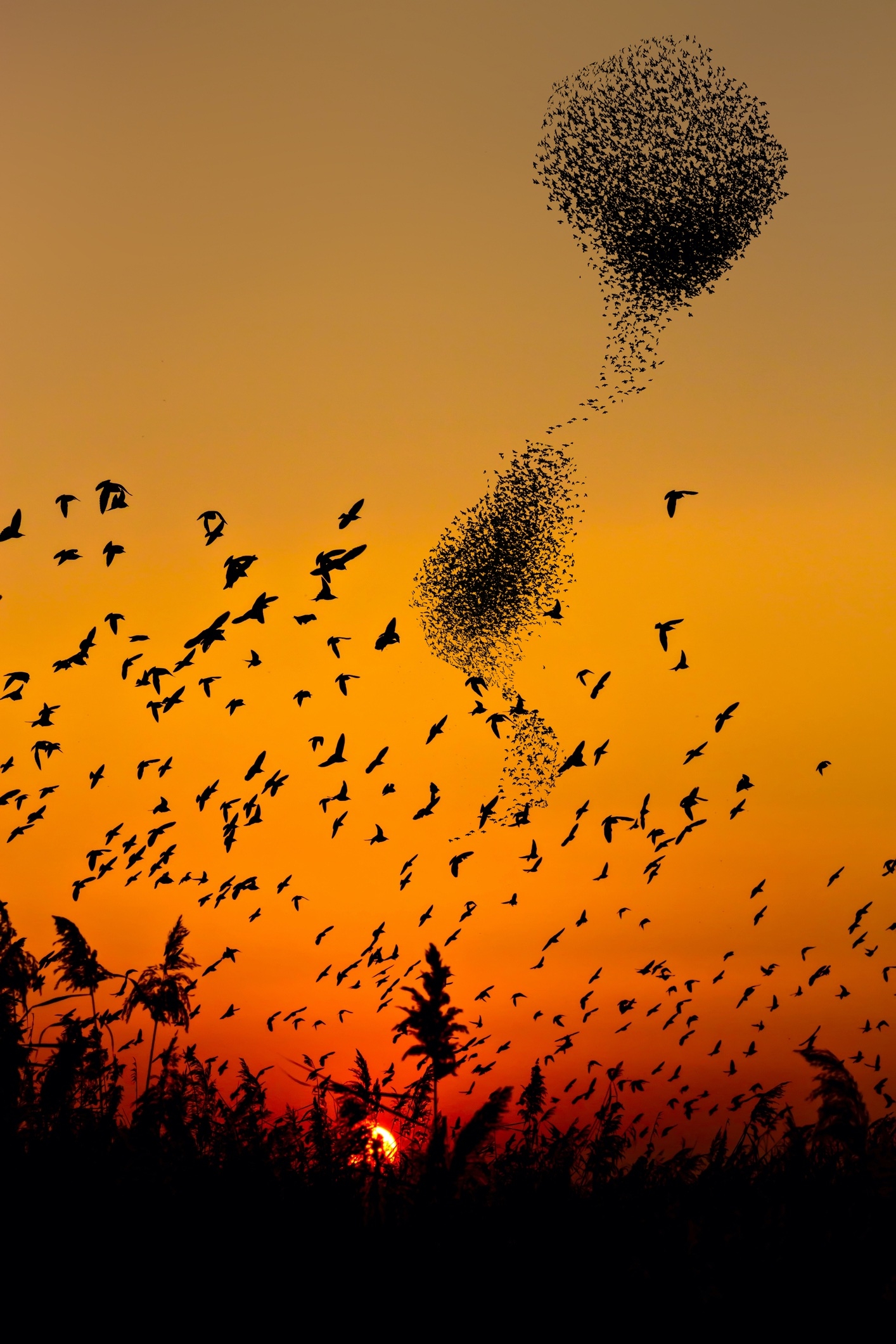Physicists work toward theory to describe pattern formation in conserved fields
When it’s time for an e. coli bacterium to divide, proteins inside the single-celled organism start to chase each other around.
“There are two types of proteins doing this, collectively,” said Fridtjof Brauns, a postdoctoral researcher at UC Santa Barbara’s Kavli Institute for Theoretical Physics (KITP). Thousands of these proteins shuttle back and forth in the cell like this, he said, “and that’s a mechanism for the cell to determine its middle.”
This cell-division mechanism is but one result of collective protein oscillations, the study of which is the subject of a paper published in the journal Physical Review X. Authored by Brauns and UCSB theoretical physicist Cristina Marchetti, it’s an investigation of so-called nonreciprocal interactions, which are ubiquitous in active matter and living systems. Collectively these nonreciprocal couplings can result in oscillations and wave patterns, for which the researchers propose a unifying set of equations.
“That’s what we try to do in physics; we try to find the common principles that underlie a whole range of phenomena that look quite different at face value,” he said. “But if you dig a little deeper, you can actually find common principles.”
Foxes and rabbits
Active matter is a term given to systems consisting of collections of “agents” — individual, self-powered units — whose behaviors can give rise to collective effects. Because these agents consume energy, they are said to be out of equilibrium.
“There’s this principle of action equals reaction,” Brauns said. “That’s Newton’s Third Law. But if you have a system that consumes energy, then it has internal machinery where this isn’t necessarily true anymore; it’s nonreciprocal.”
A popular analogy for this nonreciprocity, according to researchers, is the predator-prey model.

“A rabbit runs away from the fox, and the fox is chasing the rabbit,” Brauns said. Instead of mutual attraction or mutual repulsion as would be demanded by Newton’s Third Law, one is attracted to the other while the other flees.
In the researchers’ oscillating protein model, this non-reciprocal interaction is combined with an attractive force that only acts between agents of one species and leads to their segregation in space, like deer that like to stay close together in a herd. Mathematically, this segregation is described by the same equations that describe the phase separation of oil and water.

But this is active matter, so the action doesn’t stop there, Marchetti said. “Instead of making just this static bulk phase-separation, the entire system starts moving. Not only do the proteins start moving or oscillating, they also form a pattern.” These emergent patterns can look like stripes, or waves, as the proteins at the interface collectively chase and flee each other, she added.
To describe these spontaneous, pattern-forming behaviors, the researchers combine an equation called the Cahn-Hilliard equation, which describes the phase separation, and the FitzHugh-Nagumo model, which describes the emergence of oscillations and waves through nonreciprocal interactions.
An important aspect of the research model is that it describes conserved fields.
“It just means that the numbers of the constituents that undergo these dynamics stay the same,” Brauns explained, as opposed to systems in which members degrade or are created — the populations of foxes and rabbits are stable and fixed. “That number conservation gives the theory its mathematical features and allows us to gain physical insight that wasn’t possible before.” Up until this point, the models for pattern formation have often not considered conserved fields, though conserved systems are common in biology and also in synthetic material systems such as chemically driven colloidal particles.
Research on pattern formation in biology has roots that go back more than 70 years, to the work of Alan Turing, the famed mathematician and computer scientist.
“He wrote a very prescient and seminal paper in 1952 on how he imagined the chemical molecules or a cell in a developing organism can generate patterns like the stripes of a zebra,” Brauns said. “And that has been the guiding idea since then.” Turing’s biophysical pattern work wasn’t taken that seriously for decades, Brauns added, but the explosion of interest in pattern formation in the 1990s and also subsequent technological advances allowing people to see active components in action fired up research into the topic.
Aside from insights into developmental biology, understandings of pattern formation may also apply to the field of natural computing, in which the data processing units work by oscillation.
“There are some people who think about what the cells are doing internally as a sort of computation,” Brauns said. One classic example is the human brain, whose neurons exhibit the same behavior of electrical spiking and collective traveling waves as they transmit information. Whether they are natural, like animal cells in the middle of development, or manmade, like circuits, from a mathematics perspective, “many of the phenomena look the same or very similar, giving us hope that we can develop a unified understanding,” he said.



